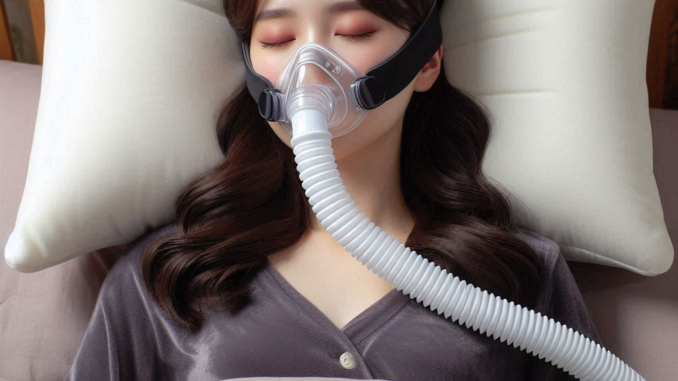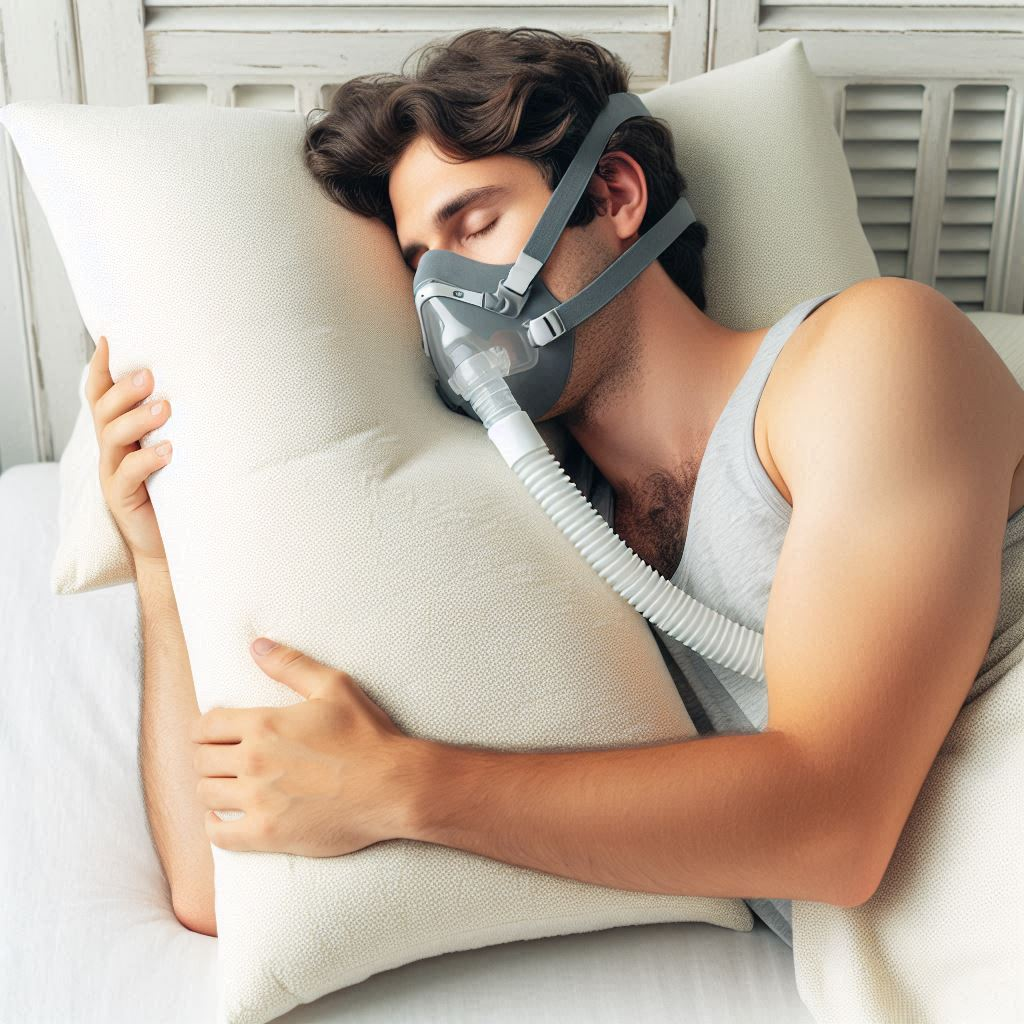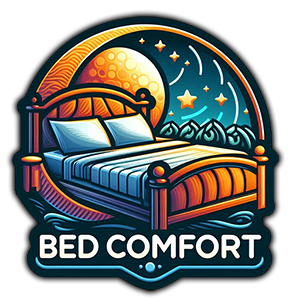
What is a CPAP Pillow?
If you’re dealing with sleep apnea and using a CPAP machine, you might have heard about CPAP pillows. But what exactly are they, and how can they help? Let’s dive in and explore this sleep-enhancing tool that’s making waves in the world of sleep apnea treatment.
A CPAP pillow is a specially designed cushion that accommodates CPAP masks and hoses, allowing users to sleep comfortably in various positions without mask displacement or air leaks. It features unique contours and cutouts to reduce pressure on the face and maintain mask seal, enhancing CPAP therapy effectiveness.
My Journey with CPAP Therapy
Before we dig deeper, let me share a bit of my own story. When I first started using a CPAP machine, I thought I’d never get a good night’s sleep again. The mask felt awkward, and I’d wake up with marks on my face. Tossing and turning was a nightmare – literally! Then a friend suggested I try a CPAP pillow. I was skeptical at first, but boy, was I in for a surprise!
Understanding CPAP Therapy: The Basics
To really understand why CPAP pillows are such a big deal, we need to understand CPAP therapy itself. CPAP stands for Continuous Positive Airway Pressure. It’s a treatment that helps people with sleep apnea breathe easier at night.
How CPAP Works
Here’s the simple version: a CPAP machine pushes air through a tube into a mask you wear while sleeping. This air keeps your airways open, stopping those scary moments when you stop breathing during sleep. Sounds great, right? Well, it is, but it comes with some challenges.
The CPAP Dilemma: Comfort vs. Effectiveness

Using a CPAP machine can be a bit tricky. You’ve got this mask on your face, connected to a tube, and you’re supposed to sleep like that. It’s not exactly a recipe for comfort. Many people struggle with:
- Mask leaks
- Discomfort from pressure on the face
- Difficulty changing sleeping positions
- Marks on the face in the morning
This is where CPAP pillows come to the rescue!
What Makes a CPAP Pillow Special?
A CPAP pillow isn’t just your average pillow with a fancy name. It’s designed specifically to work with your CPAP setup. Let’s break down what makes these pillows unique:
Design Features
- Cutouts: Special indentations on the sides allow space for your CPAP mask and hose.
- Contoured Shape: Helps maintain proper head and neck alignment.
- Versatile Design: Suitable for various sleeping positions – back, side, or even stomach.
- Adjustable Loft: Some pillows let you adjust the height to your liking.
Materials Matter
CPAP pillows often use materials like:
- Memory Foam: Molds to your head and neck for personalized support.
- Cooling Gel: Helps regulate temperature for a comfy sleep.
- Hypoallergenic Fabrics: Great for those with allergies or sensitive skin.
Benefits of Using a CPAP Pillow
Now, let’s talk about why you might want to give a CPAP pillow a try:
1. Better Mask Seal
The cutouts in CPAP pillows help your mask stay in place. This means fewer air leaks and more effective therapy. In my experience, this was a game-changer. No more waking up to adjust my mask!
2. Increased Comfort
With less pressure on your face, you’re likely to feel more comfortable. This can lead to better sleep quality overall.
3. Freedom to Move
CPAP pillows are designed to work in multiple sleep positions. Whether you’re a back sleeper, side sleeper, or toss and turn all night, these pillows have got you covered.
4. Reduced Face Marks
Say goodbye to those annoying marks on your face in the morning. The pillow’s design helps distribute pressure more evenly.
5. Improved CPAP Compliance
When you’re more comfortable, you’re more likely to stick with your CPAP therapy. And that’s crucial for managing sleep apnea effectively.
Choosing the Right CPAP Pillow
Not all CPAP pillows are created equal. Here’s what to consider when shopping for one:
Sleep Position
Think about how you usually sleep. Some pillows are better for side sleepers, while others work well for back sleepers. If you switch positions a lot, look for a versatile option.
Mask Type
Different CPAP masks need different types of accommodation. Make sure the pillow you choose works with your specific mask style.
Pillow Material
Consider what feels most comfortable to you. Do you like the feel of memory foam? Or do you prefer something cooler?
Adjustability
Some CPAP pillows let you adjust the height or firmness. This can be great for finding your perfect fit.
Budget
CPAP pillows come in a range of prices. While it’s worth investing in quality, there are options for various budgets.
Real-Life Success Stories
Let’s hear from some folks who’ve tried CPAP pillows:
Sarah, 45: "I was ready to give up on my CPAP therapy before I tried a CPAP pillow. Now, I sleep through the night without any leaks. It's been life-changing!" Mike, 52: "As a side sleeper, I struggled with my CPAP mask. This pillow solved that problem. I actually look forward to bedtime now." Lisa, 38: "I travel a lot for work, and my CPAP pillow makes it so much easier to use my machine in hotel rooms. It's become an essential part of my travel kit."
Tips for Getting the Most Out of Your CPAP Pillow
- Give it time: It might take a few nights to get used to your new pillow. Don’t give up too quickly!
- Adjust as needed: Play around with the positioning until you find what works best for you.
- Keep it clean: Follow the care instructions to keep your pillow in top shape.
- Pair it with a good mattress: A supportive mattress can enhance the benefits of your CPAP pillow.
- Consider a pillowcase: Some CPAP pillows work well with special pillowcases for added comfort.
Beyond the Pillow: Other CPAP Comfort Tips
While a CPAP pillow can make a big difference, here are some other tips to enhance your CPAP experience:
- Use a humidifier with your CPAP machine to prevent dry mouth and nasal passages.
- Try different mask styles to find the most comfortable fit.
- Use mask liners to reduce skin irritation.
- Keep your equipment clean for optimal performance and hygiene.
The Science Behind CPAP Pillows
You might be wondering if there’s any real science backing up CPAP pillows. While research is ongoing, some studies have shown promising results:
- A study in the Journal of Sleep Medicine & Disorders found that CPAP pillows can help reduce mask leaks and improve overall comfort.
- Another research paper in the Sleep Science Journal suggested that specialized pillows can lead to better CPAP compliance rates.
While more research is needed, these initial findings are encouraging for CPAP users looking for ways to improve their therapy.
Wrapping It Up: Is a CPAP Pillow Right for You?
So, we’ve covered a lot of ground here. CPAP pillows are specially designed to work with your CPAP equipment, offering benefits like better mask seal, increased comfort, and improved sleep quality. They come in various styles and materials to suit different needs and preferences.
If you’re struggling with your CPAP therapy or just looking to make it more comfortable, a CPAP pillow might be worth a try. Remember, everyone’s sleep needs are different, so what works for one person might not work for another. It might take some trial and error to find your perfect setup.
Next Steps
Ready to give a CPAP pillow a shot? Here’s what you can do:
- Talk to your sleep doctor or CPAP provider about pillow options.
- Read reviews from other CPAP users to get real-world insights.
- Consider trying a pillow with a good return policy in case it’s not the right fit for you.
- Once you get your pillow, give it a fair trial – at least a week or two to really get used to it.
Remember, the goal is to make your CPAP therapy as effective and comfortable as possible. A good night’s sleep is worth the effort!
Have you tried a CPAP pillow? What was your experience? Share your thoughts in the comments below – your insights could help someone else on their CPAP journey!


Leave a Reply